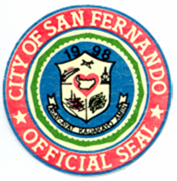Editor's note: A recent survey in San Fernando City indicates that as many as 21,000 families living within the city boundary rely on septic tanks for their wastewater treatment. When properly operated and maintained, septic tanks can remove up to 70% of the pollution from the sewage that they receive. When not maintained or operated properly, septic tanks are very inefficient, and can be linked to groundwater pollution and disease outbreaks. The purpose of this post is to provide families with general information on how to use and maintain their septic tanks and understand the signs that indicate their septic tank is ready for desludging.
Waste material from the house enters the septic tank and
- Heavier solids settle to the bottom and form a sludge layer
- Lighter wastes such as oil and grease rise to the top and form a scum layer
- Between these two layers is liquid wastewater
Then bacteria consume the organic matter in the waste as food, which drives the treatment process. Activities that upset the settling process, add too much waste, or kill the bacteria will disrupt the treatment resulting in poor performance, nuisances and the possibility of spreading diseases.
Septic Tank Do's and Don'ts
- Do connect laundry and kitchen water to septic tank.
- Do have your septic tank pumped out by a licensed operator every 5 years as part of the San Fernando City Septage Management Program
- Do have the operator check to be sure there is a tee or baffle on the outlet of the septic tank. The baffle stops the scum from floating into the disposal field.
- Do check with the CENRO department if you are having problems. They can assist with operation, maintenance and design questions.
- Do learn the location of your septic tank, drain field and well. Keep a sketch of it handy with your maintenance record for service visits.
- Do divert other sources of water, like roof drains, house footing drains, and sump pumps to lawn areas away from the septic system. Excessive water floods the system, keeping the soil in the drain field saturated and unable to adequately treat the wastewater.
- Don't put hazardous chemicals like paint or motor oil down the drain. Such chemicals can kill off the beneficial bacteria and reduce the treatment efficiency
- Don't ever enter a septic tank or leave the lid off of manholes or pump out ports. Septic tanks are dangerous and must be kept sealed to keep kids out!
- Don't put excess grease, trash or food scraps down the drain as this can overload the septic tank and reduce its efficiency
Do Not Flush Or Wash Down The Drain!
- coffee grounds
- hazardous chemicals
- dental floss
- fat or grease
- kitty litter
- disposable diapers
- grease or oil
- paper towels
- cigarette butts
- condoms
- sanitary napkins
- tampons
Overloading Septic Tanks - Reduce the volume of water entering the septic tank

Proper septic tanks are sized based on the amount of sewage generated by the occupants of the home. Extra volume will reduce the time that the waste can settle and result in poor effluent quality. Reduce extra water that enters the septic tank by:
- Fixing plumbing leaks, and running toilets. While it may seem insignificant, such leaks can add lots of volume. Fixing these leaks will also reduce water bills;
- Routing roof gutters and surface drainage away from septic tanks. Excess water entering the tank can cause overflows and send organic matter and disease causing pathogens into nearby waterways. Often, it is a simple matter to keep storm water out of septic tanks. Consider extending roof gutter systems to storm drains. If surface water tends to seep into your septic tank, mounding over it may be an easy way to divert storm water.
- Use aerators on faucets and flow reducer nozzles on showers to help lower water consumption. These simple devices are available at most plumbing supply stores
- Reduce water levels for small loads of laundry.
- Wait until the dishwasher is full to run it.
- Use a displacer to reduce the amount of water needed to flush the toilet. A displacer can be a brick or a filled water bottle. If your toilet is old, consider replacing it with a new, water saving model. Old toilets can take as much as 20 liters of water to flush, while new models require only 5 liters to flush.
Keep Trees Away from the Septic System
 Discourage root damage by keeping trees at least 100 feet away from the septic system. Trees with very aggressive roots, such as willows, should be even farther away from the system.
Discourage root damage by keeping trees at least 100 feet away from the septic system. Trees with very aggressive roots, such as willows, should be even farther away from the system.
Perform Regular Maintenance
- Solids must eventually be pumped from the tank. Participate in the City septage program and desludge your tank every 5 years to keep it functioning properly
- Remember, Safety First! Never attempt to open a septic tank yourself. Gases and bacteria in it are dangerous.
Signs That Your Septic Tank Needs to be Desludged
- Slow drains. If your toilet or sinks are draining slow, consider desludging to alleviate this problem
- Ponding of wastewater or overflowing from the septic tank. These are clear indications that something is wrong.









